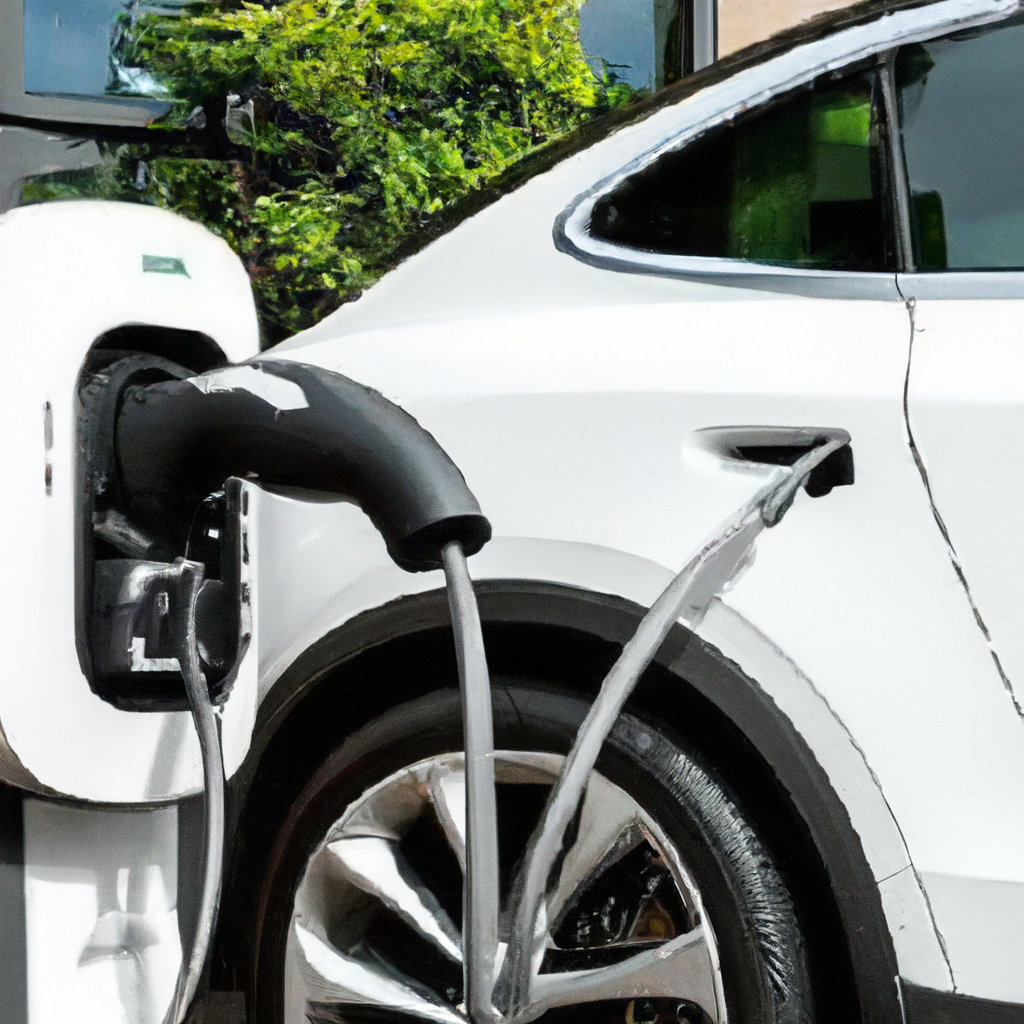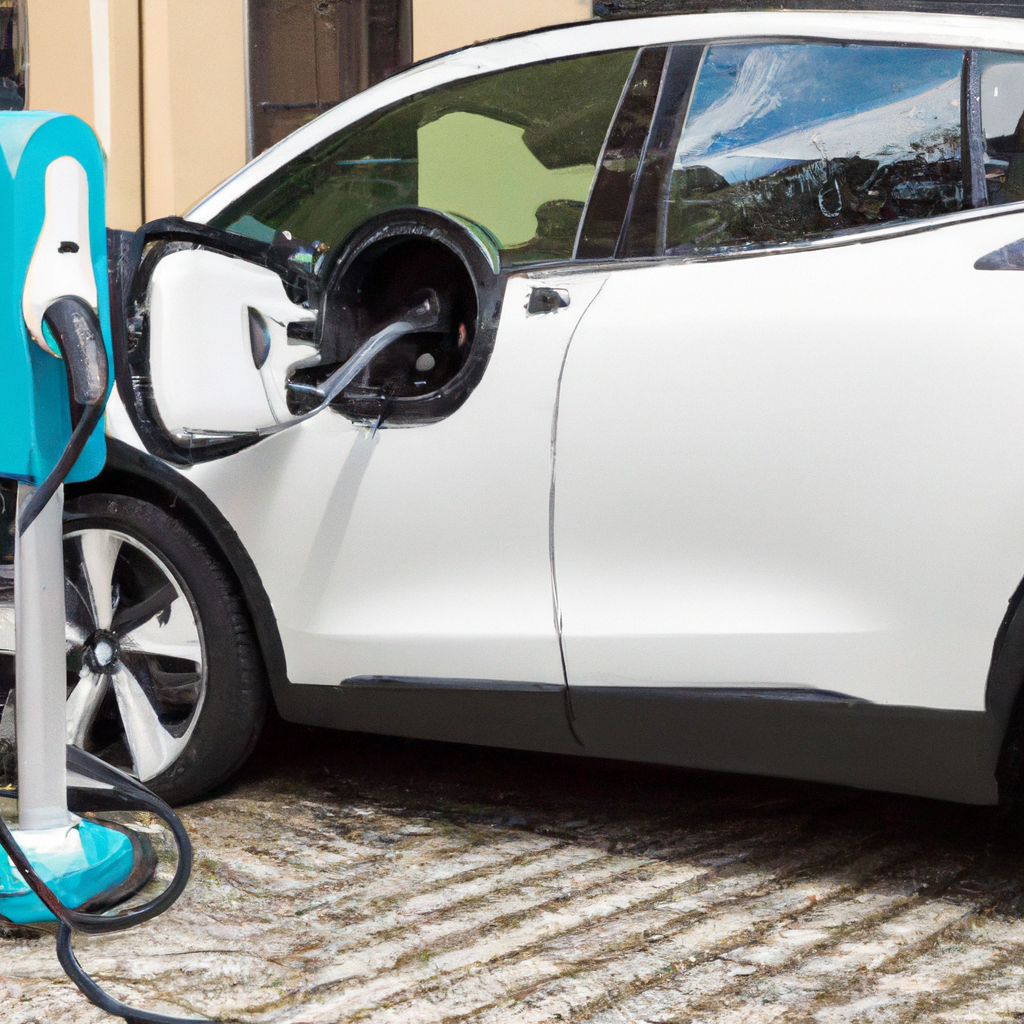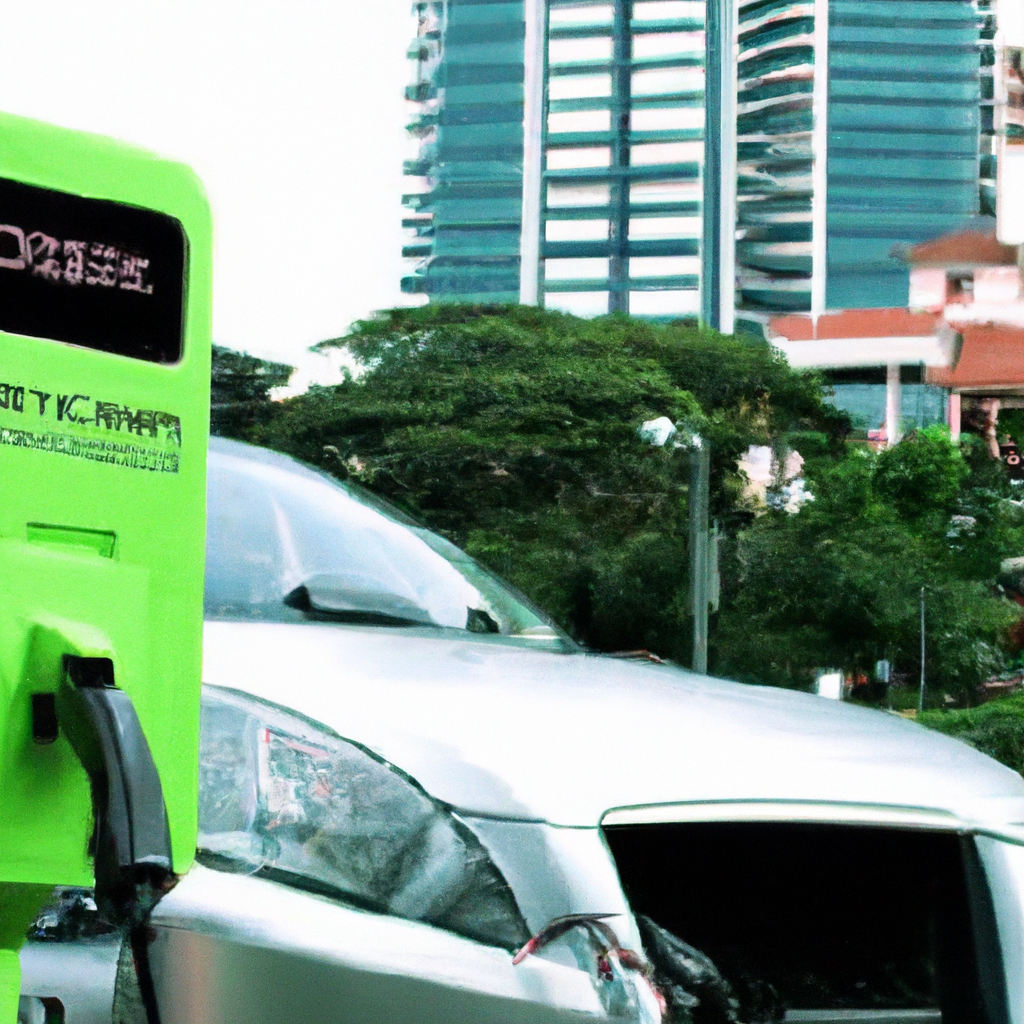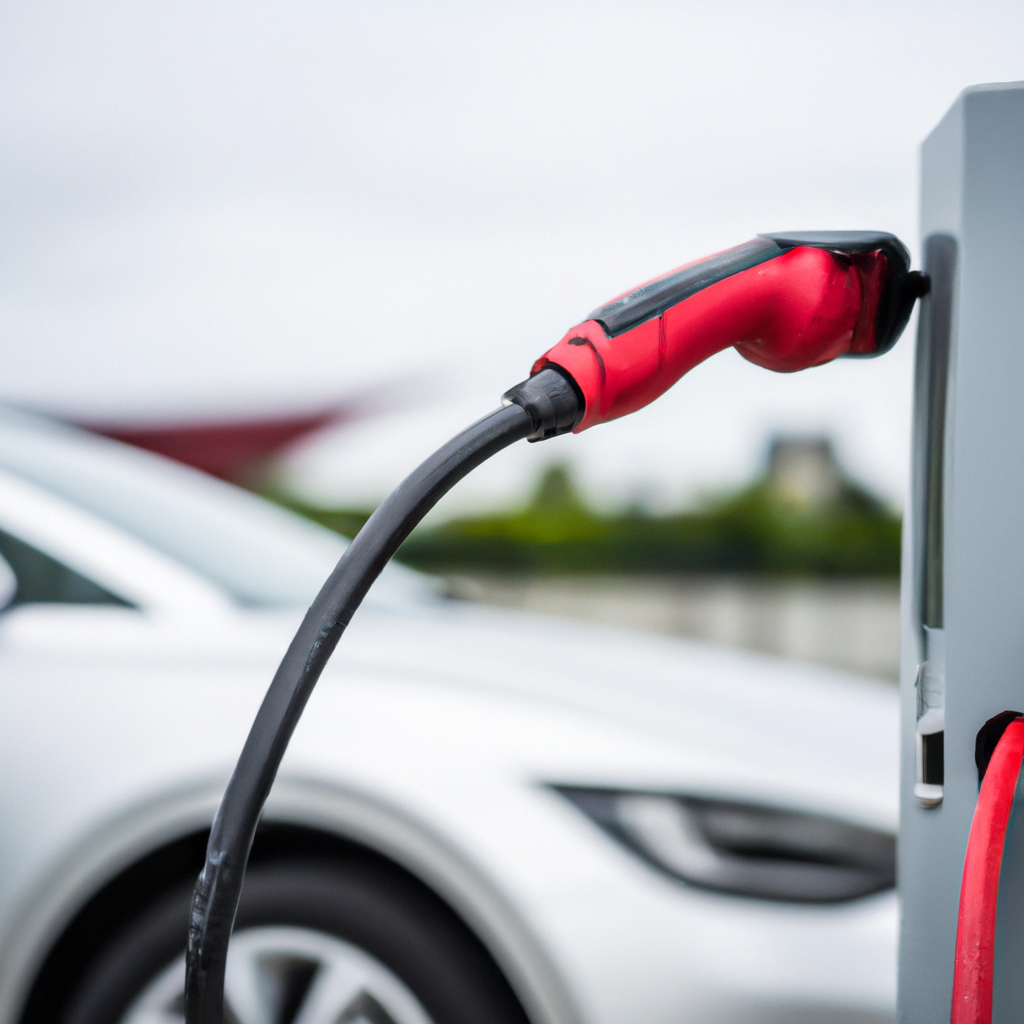
Looking to meet the high demand for EV chargers in all-electric homes? Look no further! In this article, you’ll find everything you need to know about installing EV chargers in homes that solely rely on electric vehicles. From the basics of EV charger installation to the benefits of going all-electric, we’ve got you covered. So, whether you’re a proud owner of an all-electric home or considering the switch, this article is a must-read. Get ready to discover how EV chargers can revolutionize the way you power your electric vehicles and live a more sustainable lifestyle.
Choosing the Right EV Charger

Understanding the Different Types of EV Chargers
When it comes to choosing the right electric vehicle (EV) charger, it’s essential to understand the different types available. EV chargers generally fall into two main categories: Level 1 chargers and Level 2 chargers. Level 1 chargers use a standard household outlet and provide a charging rate of about 4-5 miles of range per hour. On the other hand, Level 2 chargers require a dedicated circuit and provide a faster charging rate, typically adding 25-30 miles of range per hour.
Considering the Charging Speed
One of the key factors to consider when selecting an EV charger is the charging speed. The charging speed determines how quickly your EV will charge its battery. If you have a shorter daily commute or don’t mind leaving your EV plugged in for an extended period, a Level 1 charger may be sufficient. However, if you have a longer daily commute or frequently need to charge your EV in a shorter amount of time, a Level 2 charger would be a better choice to meet your needs.
Assessing the Compatibility with Your Electric Vehicle
Not all EV chargers are compatible with every electric vehicle. It is essential to review your EV’s specifications and verify if the charger you are considering is compatible. Some EV models may have specific charging requirements, such as a particular connector type or charging protocol. By ensuring compatibility, you can ensure that your chosen charger will work seamlessly with your EV, avoiding any compatibility issues or limitations.
Evaluating Charger Features and Smart Capabilities
In addition to charging speed and compatibility, it’s worth considering the features and smart capabilities of the EV charger. Some chargers offer advanced features like scheduling charging sessions, energy tracking, and remote access through smartphone apps. Smart charging capabilities can also include integration with smart home systems, allowing you to monitor and manage your charging activities seamlessly. Assessing these additional features can enhance your EV ownership experience and provide greater convenience and control over your charging needs.
Installation Considerations
Assessing Your Home’s Electrical Capacity
Before Installing an EV charger, it is crucial to assess your home’s electrical capacity. A Level 2 charger typically requires a 240-volt electrical circuit, which may not be readily available in every home. Consulting with a licensed electrician will help determine the electrical capacity of your home and whether any upgrades or modifications are needed to support the installation of a Level 2 charger. Understanding your home’s electrical capacity is vital to ensure a safe and efficient charging experience.

Understanding the Cost of Installation
Installing an EV charger may incur additional costs beyond the purchase of the charger itself. Factors like the wiring required, potential electrical upgrades, and labor costs can impact the overall installation cost. Getting quotes from multiple electricians and comparing the costs will help you make an informed decision. It’s also worth exploring any available rebates or incentives that can offset some of the installation costs, as this can help make the transition to electric mobility more affordable.
Determining the Best Location for the Charger
Selecting the optimal location for your EV charger is also an essential consideration. Factors like proximity to the electrical panel, accessibility, and weather protection should be taken into account. Installing the charger in a convenient and protected location will ensure hassle-free charging while maximizing the lifespan of the charger and minimizing potential damage from external elements. Consulting with an electrician can provide guidance on the best location for your specific charging needs.
Home Charging Solutions: Level 1 Chargers
Overview of Level 1 Chargers
Level 1 chargers are the simplest and most affordable charging solutions for electric vehicles. They use a standard 120-volt household outlet and are typically provided with the EV at the time of purchase. Level 1 chargers provide a charging rate of about 4-5 miles of range per hour, making them suitable for drivers with shorter commutes or who primarily charge overnight.
Pros and Cons of Level 1 Chargers
One of the major advantages of Level 1 chargers is their convenience and ease of use. Since they can be plugged into a standard household outlet, no additional installation is required. This plug-and-play nature makes them a popular choice for renters or those who are unable to install a dedicated circuit. However, the main drawback of Level 1 chargers is their relatively slow charging speed. For drivers with longer commutes or higher charging needs, Level 1 chargers may not provide sufficient charging capabilities.
Installation Process for Level 1 Chargers
Installing a Level 1 charger is typically a straightforward process. Since they use a standard household outlet, no special electrical considerations or modifications are required. Simply plug the charger into the outlet, and it’s ready to charge your EV. However, it’s essential to ensure that the outlet used for charging is on a circuit that can handle the load of charging an electric vehicle. Consulting with an electrician can help verify the suitability of the outlet and ensure safe and efficient charging.
Home Charging Solutions: Level 2 Chargers

Understanding Level 2 Chargers
Level 2 chargers are a step up from Level 1 chargers in terms of charging speed and capabilities. These chargers require a dedicated 240-volt electrical circuit and offer a faster charging rate, typically adding 25-30 miles of range per hour of charging. The increased charging speed makes Level 2 chargers a more suitable option for drivers with longer commutes or those who require frequent, faster charging.
Advantages of Level 2 Chargers
The primary advantage of Level 2 chargers is their significantly faster charging speed compared to Level 1 chargers. This allows EV owners to charge their vehicles more quickly, making them ideal for those with higher charging demands or who need to top up their EV’s battery during the day. Level 2 chargers also offer the flexibility to adjust charging levels or schedules as needed, enabling EV owners to optimize their charging experience according to their specific requirements.
Considerations for Level 2 Charger Installation
Installing a Level 2 charger requires a dedicated 240-volt electrical circuit. This typically involves working with a licensed electrician to assess your home’s electrical capacity and make any necessary upgrades or modifications. The installation process typically involves running new wiring from the electrical panel to the desired location of the charger. It’s important to ensure that the installation adheres to local electrical codes and regulations to ensure safety and compliance.
Installing a Dedicated Circuit
Why a Dedicated Circuit is Necessary
A dedicated circuit is essential for Level 2 charger installation as it ensures that your charger receives the necessary power without overloading any existing circuits. Dedicated circuits are separate electrical circuits solely dedicated to powering a specific device, in this case, your EV charger. By having a dedicated circuit, you can safely and efficiently charge your EV without causing any electrical issues or tripping circuit breakers.
Determining the Ampacity Requirements
To determine the ampacity requirements for your dedicated circuit, you need to understand the charging power of your Level 2 charger and the maximum current it draws. Your electrician can help calculate the necessary ampacity based on these factors and ensure that the circuit can handle the load without overheating or causing any electrical hazards. Determining the correct ampacity is crucial to ensure safe and reliable charging.

Working with a Licensed Electrician
Installing a dedicated circuit for your EV charger is a task best left to licensed electricians who specialize in EV charger installations. They have the knowledge and expertise to assess your home’s electrical capacity, determine the appropriate circuit size, and handle the wiring and installation process. Working with a licensed electrician ensures that the installation is done correctly, adheres to electrical codes and regulations, and provides a safe and reliable charging solution for your electric vehicle.
Smart Charging Solutions
Benefits of Smart Charging Technology
Smart charging technology offers several advantages for EV owners. One of the main benefits is the ability to schedule and control charging sessions remotely. This feature allows you to take advantage of off-peak electricity rates or optimize charging to align with your specific needs. Smart charging also enables energy tracking, giving you insights into your charging habits and helping you make informed decisions to maximize efficiency and minimize costs.
Features and Capabilities of Smart Chargers
Smart chargers come equipped with various features and capabilities to enhance your charging experience. Some models offer smartphone apps that allow you to monitor and control charging remotely. Others may include features like load management, which optimizes charging based on available electrical capacity and avoids overloading the electrical system. Smart chargers can also integrate seamlessly with smart home systems, enabling automation and intuitive control of your charging activities.
Integration with Smart Home Systems
Integrating your EV charger with a smart home system offers added convenience and automation capabilities. With this integration, you can program charging schedules, monitor energy usage, and even receive notifications or alerts about your charging status. Smart home systems can also integrate with other energy management devices, such as solar panels or energy storage systems, allowing you to create an interconnected and efficient home charging ecosystem.
Overcoming Wiring Limitations
Upgrading Your Home’s Electrical System
If your home has outdated wiring or an electrical system that cannot support the power requirements of an EV charger, upgrading the electrical system may be necessary. Upgrading your home’s electrical system involves replacing outdated wiring, increasing electrical panel capacity, and ensuring that the system meets the requirements for safely and efficiently powering an EV charger. It’s essential to consult with a licensed electrician to assess your current system and determine the necessary upgrades.

Using Home Energy Management Systems
Home energy management systems can be used to optimize and manage the electrical load of your EV charger alongside other energy-consuming devices in your home. These systems monitor electricity usage and distribute power based on available resources and customizable settings. By integrating your EV charger into a home energy management system, you can ensure efficient energy usage and effectively manage potential wiring limitations.
Adapting to Older Home Wiring
In some cases, older homes may have wiring limitations that make installing a Level 2 charger challenging. If upgrading the entire electrical system is not feasible or cost-effective, there are alternative solutions available. You can consider using charging options that do not require major modifications, such as a Level 1 charger or a slower Level 2 charger that draws a lower current. These alternatives allow you to charge your EV while working within the limitations of older home wiring.
Dealing with High Current Loads
Understanding High Current Load Challenges
High-current loads, such as Level 2 EV chargers, can place additional strain on your home’s electrical system. This can lead to issues like circuit overloads, nuisance breaker trips, or inefficient charging. Dealing with high current loads requires careful considerations to ensure safe and reliable charging without compromising the overall electrical system’s performance.
Installing Load Management Systems
Load management systems can help mitigate high current load challenges by optimizing the distribution of power within the electrical system. These systems monitor and dynamically allocate power resources to different appliances and devices based on the available capacity. By installing a load management system alongside your EV charger, you can prevent circuit overloads and ensure that your EV receives the necessary power without causing any electrical issues.
Optimizing Home Charging Infrastructure
Optimizing your home charging infrastructure involves assessing the electrical load distribution and making necessary adjustments to accommodate high current loads. This may include redistributing power usage across different circuits, upgrading wiring and electrical panels, or installing dedicated circuits for specific devices like EV chargers. By optimizing your home charging infrastructure, you can ensure a safe and efficient charging experience while minimizing any potential electrical limitations or challenges.
Integration with Renewable Energy Sources
Connecting EV Chargers to Solar Panels
Connecting your EV charger to solar panels enables you to take advantage of renewable energy for charging your electric vehicle. By generating clean energy from solar panels, you can reduce your reliance on the grid for charging and further decrease your carbon footprint. This integration allows for environmentally-friendly and cost-effective charging by utilizing renewable energy during daylight hours.
Benefits of Charging with Renewable Energy
Charging your EV with renewable energy offers several benefits. Firstly, it reduces greenhouse gas emissions and environmental impact, leading to a more sustainable future. Additionally, using renewable energy to charge your EV can be more cost-effective in the long run, as you can generate clean electricity without relying solely on utility-provided power. It’s a win-win situation, benefiting both the environment and your wallet.
Implementing Time-of-Use Charging
Time-of-use (TOU) charging is a charging strategy that takes advantage of variable electricity rates throughout the day. With TOU charging, you can schedule your EV’s charging sessions during off-peak hours when electricity rates are typically lower. This can result in significant savings on your electricity bills, especially if you have an EV charger integrated with smart charging capabilities. By aligning your charging with periods of lower demand, you can optimize charging costs and maximize your savings.
Future Trends in EV Charging
Wireless Charging Technology
Wireless charging technology is an emerging trend in EV charging that aims to eliminate the need for physical cables and connectors. Instead, wireless charging uses inductive power transfer or magnetic resonance to transfer energy from a charging pad on the ground to a receiver on the EV. This technology offers convenience and ease of use, as you simply need to park your vehicle over the charging pad for it to start charging. While wireless charging is still in its early stages, advancements in this area hold promise for the future of EV charging.
Vehicle-to-Grid Integration
Vehicle-to-Grid (V2G) integration is a concept that allows electric vehicles to not only consume electricity but also provide power back to the grid. With V2G integration, EVs can act as mobile storage units, allowing for bidirectional energy flow. During times of peak demand, EVs can feed excess energy back to the grid, helping to stabilize the electrical system and increase grid resilience. V2G integration has the potential to revolutionize the way we consume and manage electricity, transforming EVs into valuable assets for the energy grid.
Advancements in Battery Technology
The development of high-capacity, fast-charging batteries is a crucial area of advancement in EV charging. Improvements in battery technology can significantly reduce charging times, increase range, and enhance overall EV performance. Battery innovations like solid-state batteries, which offer higher energy density and faster charging, hold significant potential for the future of electric mobility. These advancements aim to make charging faster, more convenient, and more efficient, further accelerating the adoption of electric vehicles.
As the demand for electric vehicles continues to rise, the availability and accessibility of EV chargers are becoming increasingly important. Understanding the different types of EV chargers, assessing installation considerations, and evaluating charger features can help you choose the right charger for your electric vehicle. Whether you opt for a Level 1 charger, Level 2 charger, or explore smart charging solutions, there are options available to meet your charging needs. As technology continues to advance, the future of EV charging holds exciting possibilities, with wireless charging, vehicle-to-grid integration, and advancements in battery technology set to shape the way we charge our electric vehicles.
RELATED POSTS
View all


